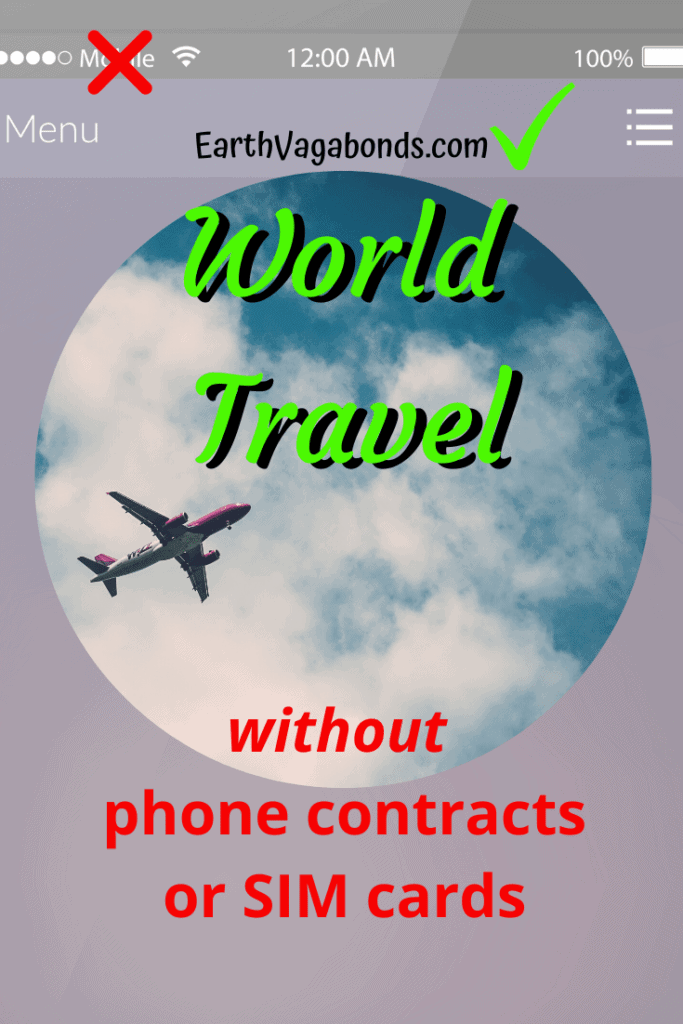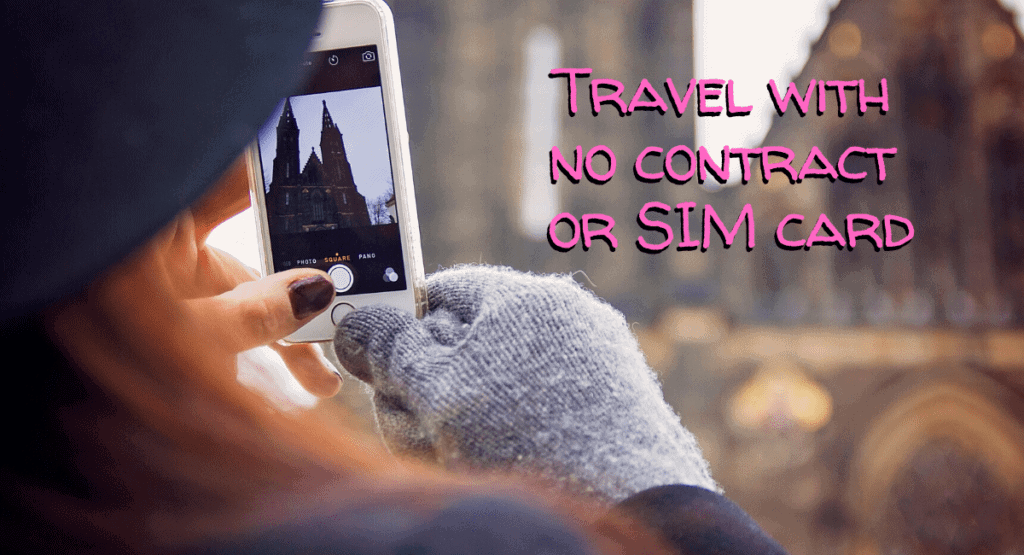Last Updated on June 3, 2023 by Ellen
Since August 2015, I have done continuous world travel without a phone contract or (frequent) SIM card. This post is about how that’s possible — most Americans cannot imagine themselves without a cell phone plan, let alone travel the world without one. I will admit: there have been some challenges to overcome. But I’m here to show you: it’s totally possible.
Own the phone, don’t rent
Basically, I use my iPhone as a mini-computer (and camera). I connect to WiFi to make video calls, audio calls, and send text messages. This works if you own a smart phone outright and don’t need a SIM card.
Cell companies don’t want to let you out of any contract. AT&T had no choice other than let me out of my contract because I physically moved from the U.S. to Mexico three years ago and at that time, the company didn’t service Mexico (now it does). So I paid AT&T the balance owed on my then one-year-old “rented” iPhone 6.
Since then, I’ve taken this phone with me on our travels, and I have saved $120+ each month (my former bill). Sure, I had to buy the phone outright. But I’m still using it today, so I saved money in the long run.
Text messages, WiFi-based phone number, video and audio calls
I can text message with other Apple devices using the iCloud on WiFi— without a SIM card. iMessage has to be turned on, and it only works with other Apple devices. For people on other phones, I use several other apps, including Facebook’s Messenger or Facebook’s WhatsApp.
Starting a WhatsApp account was actually a challenge because it requires a phone number, which I no longer had. My solution to this was another app called Talkatone. It gives you a free dedicated phone number — as long you use it a few times a month. Or, pay $4 dollars a month to keep the number without actually using it, or put a few bucks into your account and get “credits” to keep it active. Text messages to other U.S. phone numbers is free, but this is a bummer — the recipient has to see an advertisement before he or she sees your text message.
Talkatone has other drawbacks. It charges steep prices for international calls, and the terms and conditions indicate possible additional future charges. There are similar apps I can switch to if Talkatone’s prices increase to much. But for now, having some kind of free/cheap phone number has come in handy.
Also, as a WiFi-based number, some companies don’t accept Talkatone numbers as valid. (More on that in the next section.)
We use Skype for financial and customer service calls. Skype has the clearest audio (on our devices, anyway). Our financial calls are free because we usually can use a company’s toll-free numbers. For any call that’s not toll-free, Skype has reasonable rates so we always keep a couple of dollars on our account for such calls.
Skype also has the clearest video chat – but not everyone uses Skype, so we most often use Facebook’s Messenger for video calls because that quality is a close second-place.
Without Wifi, we are cut off from the world — that’s not necessarily a bad thing.
Two-factor authentication
As more companies require two-factor authentication, I might look into a Google number at some future point. But the idea of giving Google even more power over my life is not something I look at with anticipation.
For example, Uber does not accept WiFi-based numbers like ours from Talkatone, and so we can no longer use Uber. We still can use Grab, however. (Grab is the Asian fraternal twin to America’s Uber.)
But for now, our banking can still be done with identification methods other than a ‘real’ phone number. And WhatsApp, Facebook, email accounts, and other apps I use still accept WiFi-based numbers.
What about emergencies?
People wonder what do I do if I have to call 911? Well, in some of the countries we’ve traveled to, there is no 911 service, or the service is poor, such as Guatemala. Also, if I called 911 in Morocco, for example, I would not be able to tell the operator where I was, exactly, or what exactly was wrong Moroccan Arabic.
If a serious emergency every came up and I wasn’t around wifi, I’d be at the mercy of strangers, and God or the Universe or Fate, whatever you chose to call it. Or, if it wasn’t a spontaneous emergency and I had some time to handle it, I could buy a SIM card in whatever country I happen to be in. Prices for simple SIM cards are dramatically lower in countries outside the U.S. Travel SIM cards geared to traveling Americans, like WhistleOut, tend to cost much more than local SIM cards bought in foreign countries.
Smart phones can kinda suck
Despite all of these easy methods for audio and visual calls and text messages on the smart phone, I also still love to communicate by email. No matter the time zone, I can give a person my full attention when I’m writing to them. I have been trying to use email more often. In many ways, I think email is superior.
Who wants to be on the phone that much, anyway? It narrows our lives when there is an entire real world out there to explore.
This is by no means an exhaustive list of how to make calls while abroad and on-the-go. This is simply what’s worked for us up until now. If you’ve got something different that works for you – we’d love to hear about it!
This post was updated mid-November 2019.


